Julia Child was a pioneer in the world of haute cuisine at a time when celebrity "chefdom" was a decidedly manly occupation. She didn’t care. The kitchen was her natural habitat and she had her own ways of making it work for her whether she was whipping up a soufflé or flaming a creme brûlée. 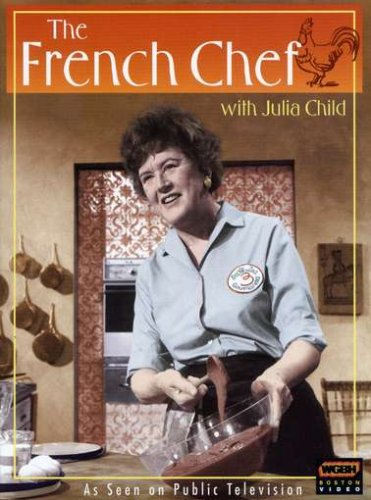 Child is credited with bringing French cuisine to America in the 1960s and was host of The French Chef on PBS which aired from 1963-1973. Interestingly, she did not learn to cook until she met her husband Paul Child, an American diplomat with a refined palate. Julia also worked for the government during WWII as a research assistant in the Secret Intelligence division of the OSS (Office of Strategic Services). It was in this capacity that she created her first recipe which was for shark repellent! It worked and is still in use today. After the war the couple settled in Paris where Paul worked for the US Foreign Service and Julia attended the renowned Le Cordon Bleu cooking school. She had fallen in love with French cuisine. Julia stood 6’2”, never had any children and left this world in 2004, two days shy of her 92nd birthday. She was quoted as saying, “with enough butter, anything is good”. Apparently her health was none the worse for it.
Child is credited with bringing French cuisine to America in the 1960s and was host of The French Chef on PBS which aired from 1963-1973. Interestingly, she did not learn to cook until she met her husband Paul Child, an American diplomat with a refined palate. Julia also worked for the government during WWII as a research assistant in the Secret Intelligence division of the OSS (Office of Strategic Services). It was in this capacity that she created her first recipe which was for shark repellent! It worked and is still in use today. After the war the couple settled in Paris where Paul worked for the US Foreign Service and Julia attended the renowned Le Cordon Bleu cooking school. She had fallen in love with French cuisine. Julia stood 6’2”, never had any children and left this world in 2004, two days shy of her 92nd birthday. She was quoted as saying, “with enough butter, anything is good”. Apparently her health was none the worse for it. 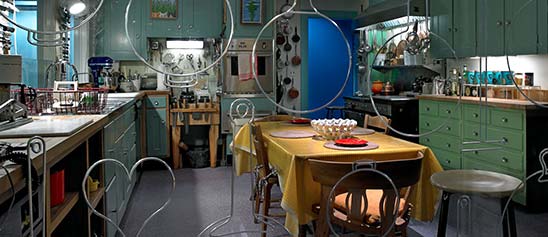 Julia’s real life kitchen was donated, moved and reassembled in the Smithsonian's National Museum of American History in 2001. The layout was devised by Julia and her husband and customized to her cooking needs, including higher counter tops to accommodate her height. Pots and cooking utensils are all placed exactly as they were in her home. Today Julia would be utterly amazed at the advancements in appliances, materials and new storage options. Although her kitchen goes back 50 years she had ideas and practices that are very relevant today. Here is what I think today’s kitchen would look like through the eyes of The French Chef.
Julia’s real life kitchen was donated, moved and reassembled in the Smithsonian's National Museum of American History in 2001. The layout was devised by Julia and her husband and customized to her cooking needs, including higher counter tops to accommodate her height. Pots and cooking utensils are all placed exactly as they were in her home. Today Julia would be utterly amazed at the advancements in appliances, materials and new storage options. Although her kitchen goes back 50 years she had ideas and practices that are very relevant today. Here is what I think today’s kitchen would look like through the eyes of The French Chef. 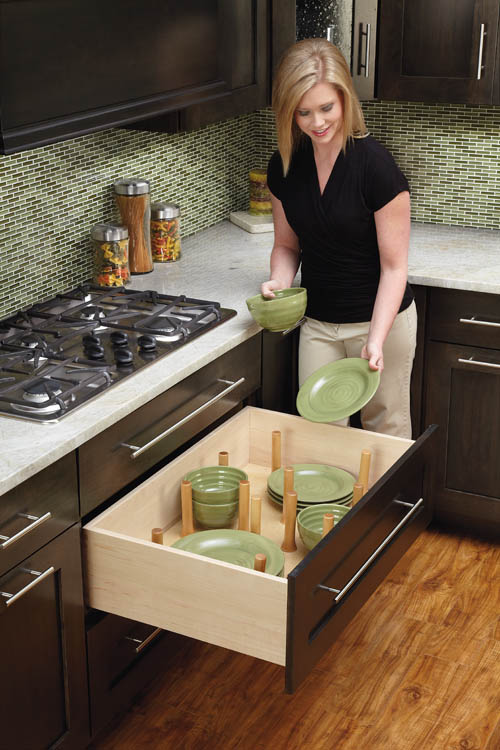 Organization and Easy AccessJulia was known for her handy and efficient peg board system. Companies like Rev-A-Shelf have taken this concept and expanded it so that it doesn’t have to be on the wall. Moving pegs allow these inserts to be customized. This is especially handy for dish storage in new kitchens that feature fewer upper cabinets. A "Julia kitchen" includes a place for everything and everything in it’s place.
Organization and Easy AccessJulia was known for her handy and efficient peg board system. Companies like Rev-A-Shelf have taken this concept and expanded it so that it doesn’t have to be on the wall. Moving pegs allow these inserts to be customized. This is especially handy for dish storage in new kitchens that feature fewer upper cabinets. A "Julia kitchen" includes a place for everything and everything in it’s place. 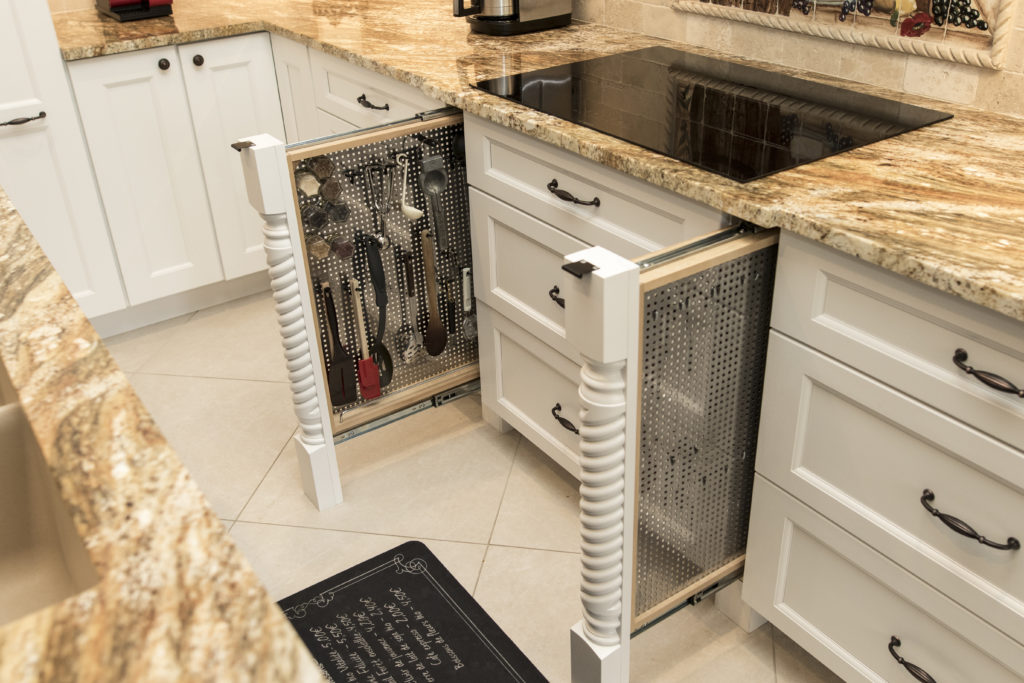 To Make the Cut You Must Have Great KnivesA self-proclaimed knife freak, Julia collected them all her life and never met one that was sharp enough for her! Check out this delightful anecdote from the New England Historical Society and you'll see what I mean. I agree that there is nothing more frustrating in the kitchen than dull knife. The winner in my book is J.A. Henckels International 8" Classic Chef's Knife in terms of quality and value for the money.
To Make the Cut You Must Have Great KnivesA self-proclaimed knife freak, Julia collected them all her life and never met one that was sharp enough for her! Check out this delightful anecdote from the New England Historical Society and you'll see what I mean. I agree that there is nothing more frustrating in the kitchen than dull knife. The winner in my book is J.A. Henckels International 8" Classic Chef's Knife in terms of quality and value for the money.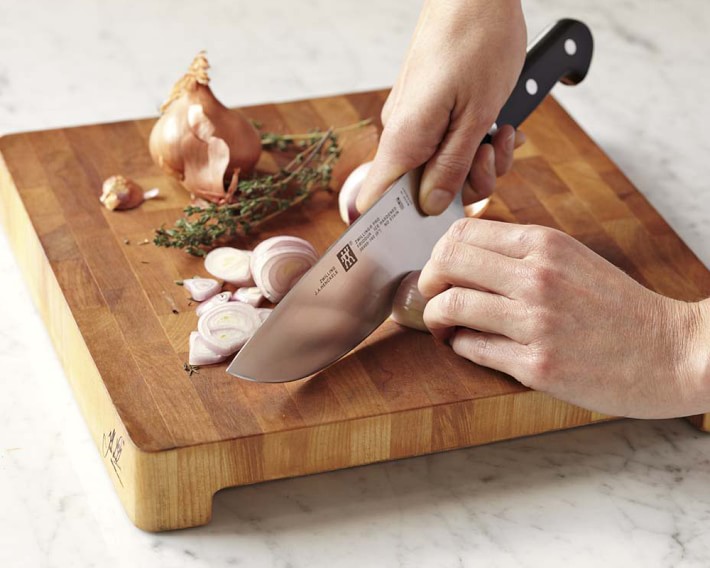 Having a great knife is half of the equation, now we have to store them. Julia preferred to house them on a magnet attached to the wall. Today she would love this railing system by Clever Storage that allows you to take advantage of the space between upper and lower cabinets. It's safe, attractive and accessible. Win!
Having a great knife is half of the equation, now we have to store them. Julia preferred to house them on a magnet attached to the wall. Today she would love this railing system by Clever Storage that allows you to take advantage of the space between upper and lower cabinets. It's safe, attractive and accessible. Win!  The Mother Ship of RangesJulia used a 1950s six burner used commercial gas range by Garland. This company is still in business so you can get a modern version today but I’m betting Julia would fall for the TriFuel range by Tecnogas Superiore for its state of the art versatility. In fact, it was just announced Product Innovator Award winner for 2016 by Kitchen & Bath Business Magazine. It features dual gas burners plus four induction zones and an electric griddle. Below are dual gas ovens equipped with two convection fans and a broiler.
The Mother Ship of RangesJulia used a 1950s six burner used commercial gas range by Garland. This company is still in business so you can get a modern version today but I’m betting Julia would fall for the TriFuel range by Tecnogas Superiore for its state of the art versatility. In fact, it was just announced Product Innovator Award winner for 2016 by Kitchen & Bath Business Magazine. It features dual gas burners plus four induction zones and an electric griddle. Below are dual gas ovens equipped with two convection fans and a broiler.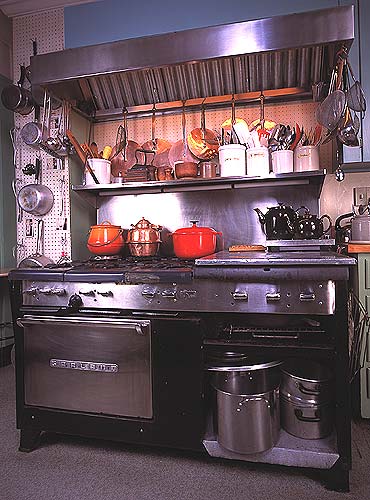
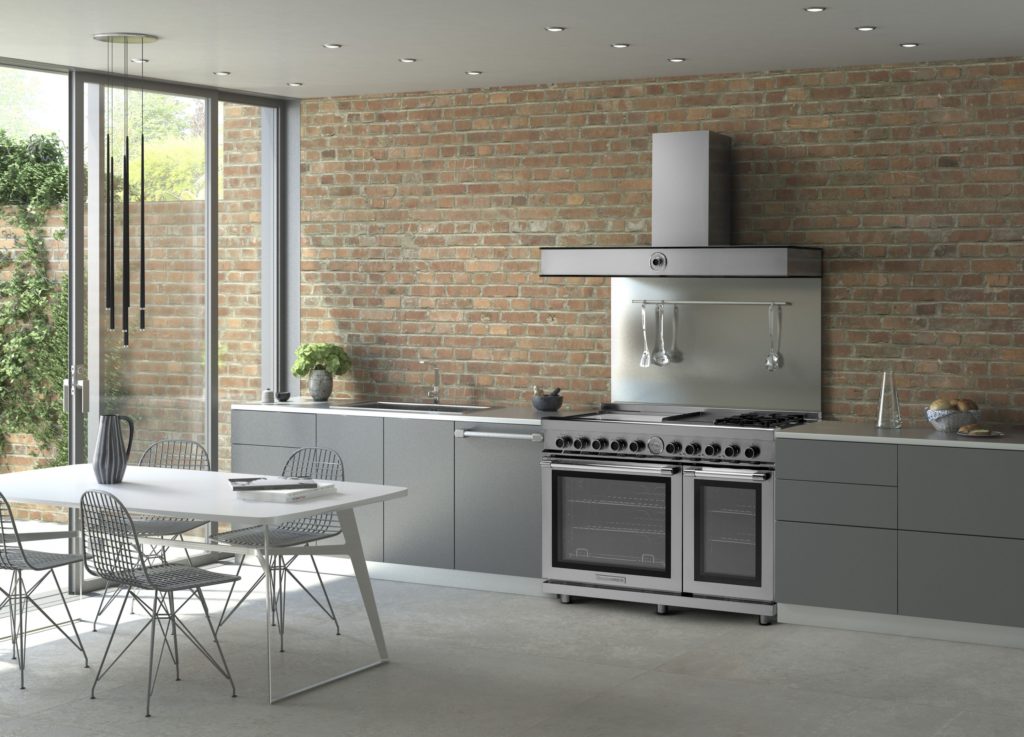 The Beauty of Butcher BlockThe French Chef was fond of her extra high maple counter tops for food preparation. You may not want an entire kitchen with wood tops but, if you can, it's great to have a section of it for food prep. Wood butcher block counters are a natural eco-friendly choice, absorb noise, are gentle on dishes and can be refinished. In addition to this, wood has inherent antibacterial qualities and can add a beautiful warmth to your kitchen. If you're going to use your counter for food prep it should have an oiled finish which does need to be maintained.
The Beauty of Butcher BlockThe French Chef was fond of her extra high maple counter tops for food preparation. You may not want an entire kitchen with wood tops but, if you can, it's great to have a section of it for food prep. Wood butcher block counters are a natural eco-friendly choice, absorb noise, are gentle on dishes and can be refinished. In addition to this, wood has inherent antibacterial qualities and can add a beautiful warmth to your kitchen. If you're going to use your counter for food prep it should have an oiled finish which does need to be maintained. 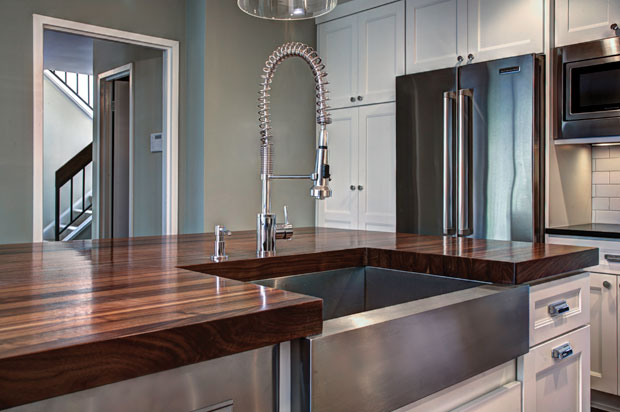 Last but not least never enter the kitchen without a sense of humor and adventure Child was never without it! She said, “in cooking you’ve got to have a what-the-hell attitude!”-If you'd like to experience cooking like a French chef you can stay at what was once Julia and Paul's part-time residence in Provence, France courtesy of Airbnb.
Last but not least never enter the kitchen without a sense of humor and adventure Child was never without it! She said, “in cooking you’ve got to have a what-the-hell attitude!”-If you'd like to experience cooking like a French chef you can stay at what was once Julia and Paul's part-time residence in Provence, France courtesy of Airbnb.
Furniture Islands Lend Style & Function to the Kitchen
If you've always wanted the convenience and look of a kitchen island within your budget, today may be your lucky day-after-St. Patrick's Day! One of the perks of writing a design blog is all the press releases that come my way. I'm always being informed on where to go to find the latest for greatest function, design and value. Furniture kitchen islands by Jeffrey Alexander found their way into my inbox and caught my eye. Here are a couple of my favorites.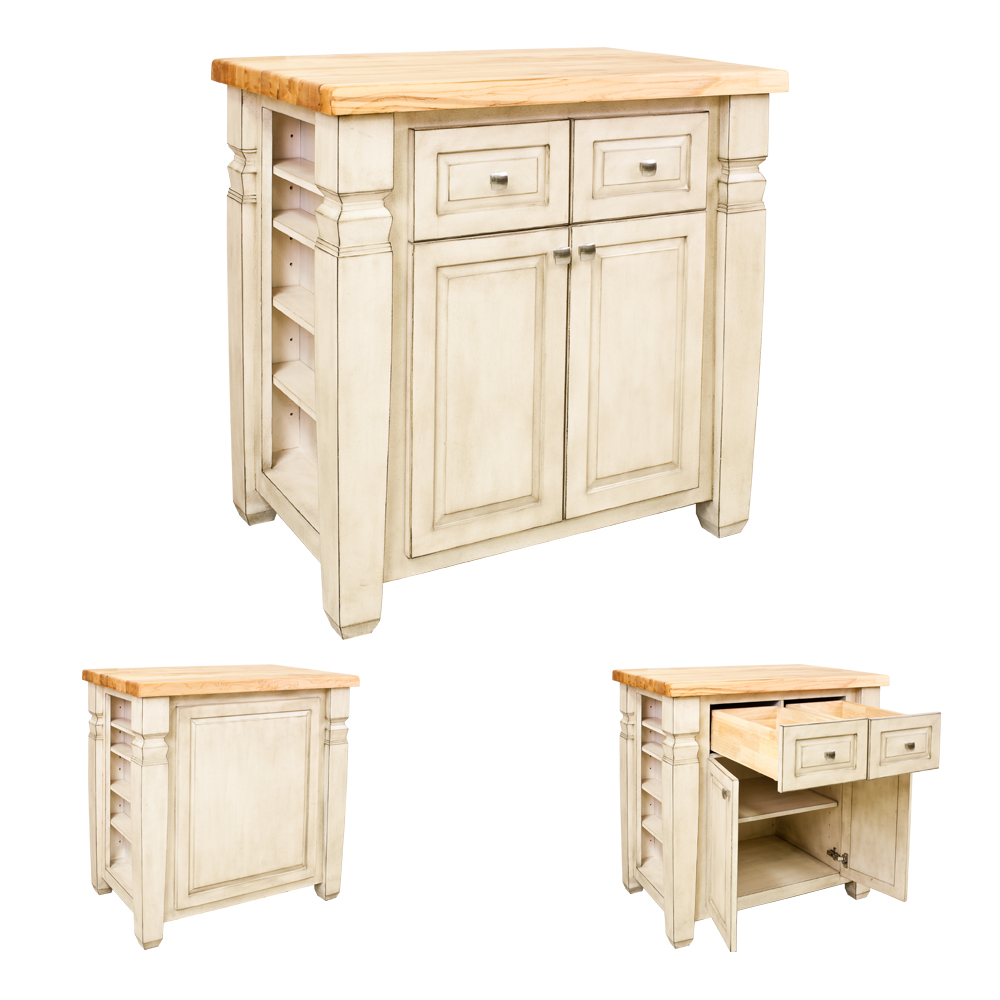 Cabinet hardware and accessory maker Hardware Resources, debuts the Jeffrey Alexander Loft Island. I love it because it packs a whole lot of function and storage into such a small foot print! It's 36" wide by 24" deep. The furniture look easily blends into an existing kitchen and no plumbing or wiring are required! It comes in Aged Black or sophisticated French White Designed to perfection, the island gives extra space for storage while increasing counter work area for cooking prep. The butcher block top is optional.
Cabinet hardware and accessory maker Hardware Resources, debuts the Jeffrey Alexander Loft Island. I love it because it packs a whole lot of function and storage into such a small foot print! It's 36" wide by 24" deep. The furniture look easily blends into an existing kitchen and no plumbing or wiring are required! It comes in Aged Black or sophisticated French White Designed to perfection, the island gives extra space for storage while increasing counter work area for cooking prep. The butcher block top is optional. 
- If contemporary is more your cup of tea. Jeffrey Alexander also makes this island called, of course, The Contemporary. This one is a bit larger at 54" by 34" and features 6 working drawers, 3 on each side. The butcher block top is optional. Click here to view the many other furniture island options.
WOOD TOPS IN THE KITCHEN?
As a kitchen designer I am frequently asked about the wisdom of installing wood countertops for food preparation. The warmth and natural appeal of wood tops can be both a focal point as well as a functional advantage for the heart of your home. Just as with anything else there are a few things to be aware of if you decide to go this route.
Many people wonder if wood surfaces are sanitary. Laminate and solid surfaces such as quartz and Corian, due to their non-porous nature, are considered safe for preparing meat or vegetables. Wood, because of its porosity is commonly thought to be a breeding ground for harmful bacteria. However in the 1990s researchers discovered that wood naturally exhibits strong antibacterial properties. According to these studies, and to others that followed, bacterial populations disappear quickly and without help on wood surfaces, while on plastic surfaces they persist and actually multiply. In fact the term “butcher block”, another name for wood counter tops, was coined because in days past it was the popular choice for butchers! Although these bacteria resistant properties vary among wood species, wooden cutting surfaces are gaining popularity especially with the advent of the green movement.
In general wood countertops are more expensive than laminates. The price can vary widely depending on wood species, thickness, how the wood sections are arranged and which grain of wood is visible. Keep in mind that nicks or damages can always be repaired by resanding and resealing.
Some wood top fabricators will include a durable safe sealer finish or some prefer a natural mineral oil finish. A good countertop finish should retain the moisture of the wood and keep food residue and surface moisture out within reason.
You don’t have to install wood tops throughout your entire kitchen. Sometimes a wood top in just one area such as an island (as in the picture above courtesy of Holiday Kitchens) is a popular choice creating a pleasing focal point and gathering spot for your family. Next post: Art in the Kitchen

